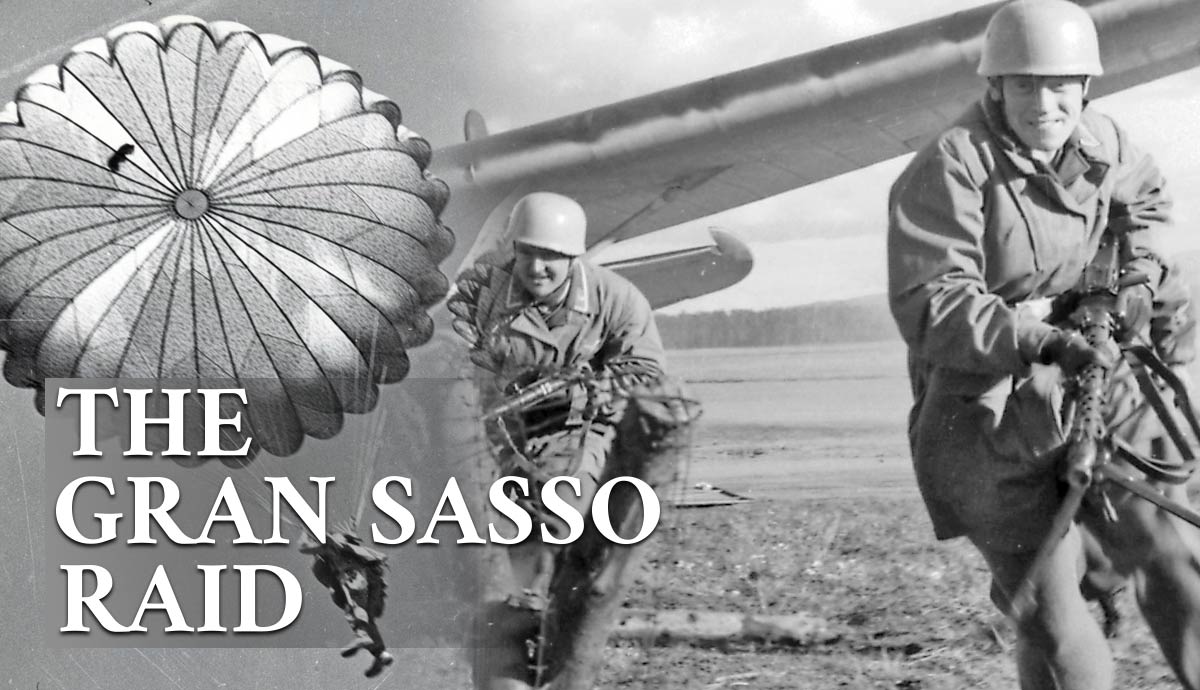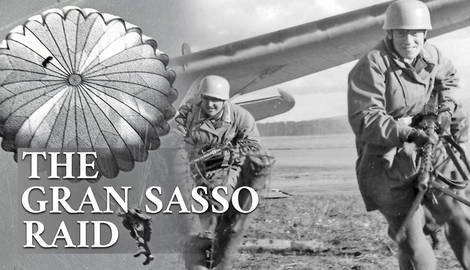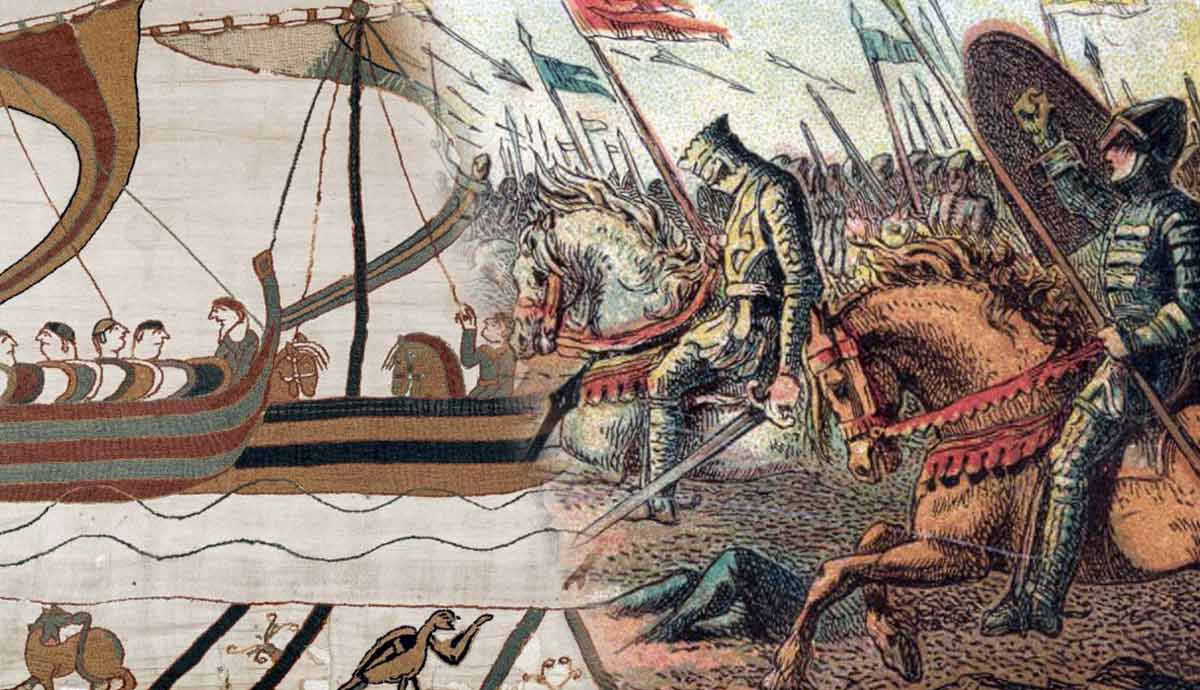
World War II was not going well for Nazi Germany in September 1943: Italy had just surrendered to the Allies, the Red Army was gaining ground on the Eastern Front, and industrial production was strained to the breaking point. However, the Third Reich still had the ability to shock and awe, namely with a spectacular commando mission to rescue imprisoned former Italian dictator Benito Mussolini. Il Duce had been deposed in July, and Adolf Hitler wanted his old friend rescued. In what would become a plot worthy of a Hollywood blockbuster, a team of German commandos launched a daring glider and paratrooper raid on a luxury hotel high in the Italian mountains to return Mussolini to power.
Setting the Stage: The Emergence of Paratroopers

The modern use of parachutes to safely descend to the ground from a flying airplane began during World War I when pilots were equipped with parachutes for emergency bailouts. By the end of the war, pilots on all fronts widely carried the new devices, which often served as cushions when not in use. However, not until the late 1920s did the idea of using parachutes to drop combatants begin. By the 1930s, both Germany and the Soviet Union were experimenting with dropping troops by parachutes. Late in the decade, Canada and the United States also began experimenting with the concept.
In the 1930s, possibly inspired by the Soviet Union, Nazi Germany began developing a parachute corps, which also served as a way to get around the strict limit on the size of Germany’s traditional army that had been imposed by the Treaty of Versailles in 1919. By the late 1930s, hundreds of German soldiers had been trained as paratroopers. After the outbreak of World War II in Europe, Germany was the first nation to use paratroopers in combat in April 1940, during its invasion of Norway and Denmark. The next month, Germany used both paratroopers and gliders to good effect in the invasion of France, resulting in it significantly expanding its paratrooper force for 1941.
Setting the Stage: Commando Tactics

Similar to paratroopers, commandos developed simultaneously in different countries. The first nation with formal commandos, however, was Britain, which developed commando forces in June 1940 after the defeat of France by Nazi Germany. These elite troops were highly trained in rapid mobilization and unconventional warfare and were inspired by similarly mobile troops during the Boer War in South Africa between 1899 and 1902. Commandos were used to perform raids and strike enemy locations quickly to wreak havoc before escaping.
By early 1942, British commandos were performing raids in Nazi-held territory in Europe, typically to sabotage military facilities. A few months later, in July 1942, the United States formed its first formal special forces group. The Axis Powers in Europe had their own commando-style units, such as the German Brandenburgers and the Italian frogmen. These various special forces units required advanced training and prized the use of speed and stealth. One of the most famous groups of special forces from World War II, Norwegian ski troops, is credited with destroying the Nazi atomic bomb project in early 1943.
July 25, 1943: Benito Mussolini is Arrested

In July 1943, after having defeated all Axis forces in North Africa, Britain and the United States invaded the Italian island of Sicily with Operation Husky. After Sicily fell to the Allies, Italian dictator Benito Mussolini was deposed by King Victor Emmanuel III and arrested. The July 25 arrest of Mussolini was shocking and created much turmoil amidst the ongoing war. Badoglio wanted to remove Mussolini’s fascist regime, but Italy was full of troops from fascist Nazi Germany. At first, Badoglio pledged that Italy would continue the war as Germany’s ally.
Germany was highly suspicious of the situation in Italy, and Nazi dictator Adolf Hitler contemplated calling for a rapid seizure of Italy’s government by German troops. More German units entered the country, and part of a parachute division was even flown to Rome. Behind the scenes, the Western Allies (Britain, Canada, and the United States) were negotiating with Badoglio’s government to secure Italy’s surrender. If Allied troops could land in Italy unopposed, they could storm north and into Germany, potentially ending the war quickly. Unfortunately for Italy, Germany was also aware of this strategy.
The Search for Il Duce

Despite some wartime disagreements between the pair, Hitler was distraught by the arrest of Mussolini and wanted to return the original fascist dictator to power. However, Hitler’s government did not know where Mussolini was, which may have allowed cooler heads to prevail and prevented mass German reprisals against Badoglio and King Victor Emmanuel III. While German planners worked on Operation Achse to disarm Italy and seize power, a quiet search for Mussolini began.
In August, German troops continued to enter the country, taking advantage of the relative silence of the Badoglio government. As no firm deal had yet been reached with the Allies, Italy did not want to use force to stop German units from entering the country and risk open warfare without Allied backup. By mid-August, Hitler felt sure that Italy would soon announce its surrender to the Allies. Meanwhile, German commando leaders Otto Skorzeny and Karl Radl had been sent to Italy to track down Mussolini…and uncovered an Italian radio transmission on September 7 that gave away the prisoner’s location.
Early September: Planning the Raid

In late August of 1943, Mussolini was moved to the Hotel Campo Imperatore in Italy’s mountainous Gran Sasso region. Previously, the deposed dictator had been moved from one island to another to keep him isolated from potentially loyal fascists who might try to rescue him. On September 8, Italy announced its surrender to the Allies. This triggered Operation Achse, and German units moved to surround and compel the surrender of their former Italian allies. As this drama unfolded, Skorzeny and Radl fine-tuned a plan to rescue Mussolini from Gran Sasso.
The plan would use gliders to land Skorzeny and his men, elite commandos, near the hotel. Aerial reconnaissance conducted on September 8 revealed potential landing sites, and the Germans might have the element of surprise. Although the Germans would certainly be outnumbered by the Italians guarding Mussolini, they might be able to move fast enough to rescue the dictator and depart to a nearby airfield for extraction before being overwhelmed. With Achse ongoing, Italians would be on high alert for German interference.
September 12: The Gran Sasso Raid Commences

Shortly after noon on September 12, 1943, Skorzeny’s mission was launched. Operation Eiche involved ten gliders that took off from an airfield near Rome with heavily armed Fallschirmjäger paratroopers aboard. While the gliders headed straight for the hotel, paratroopers landed below in the mountainous area to block the route to the hotel and cut off communications. A handful of Italian casualties occurred during this maneuver to isolate the hotel, while the Germans enjoyed good luck in the rough glider landings—only one was wrecked.

Two hundred well-armed Carabinieri guards surrounded the Hotel Campo Imperatore, but they were stunned by the sudden arrival of Skorzeny’s commandos. A German-allied Italian general brought along for the operation ordered the guards to stand down, and the guards hesitated long enough for Skorzeny himself to seize and smash the guards’ radio. With no help coming, the guards chose not to resist, and Skorzeny quickly located Mussolini in one of the hotel rooms. Upon rescuing the former dictator, Skorzeny announced that the act was a token of Hitler’s “loyal friendship.”
September 12-14: Reuniting the Fascist Duo

Instead of going to an airfield by car, where Italian reinforcements might overwhelm Skorzeny’s commandos, it was decided to fly Mussolini directly out of the rocky Gran Sasso. A Fieseler Fi 156 “Storch” was summoned to land and did so with only about 100 feet of rocky runway. Skorzeny and Mussolini boarded the small plane, which took off again. The duo landed in Rome, where they boarded a full-size German bomber to fly north to Austria.
From Vienna, Austria, the pair flew on to Hitler’s headquarters, known as the Wolf’s Lair, the next day. Hitler was elated with the mission’s success and rewarded its commanding officer, Otto Skorzeny, with both medals and a promotion. Four days later, on September 18, 1943, Mussolini made his first address to Italy since his arrest on July 25. He would quickly be re-installed as the new leader of German-occupied Italy.
Reaction to the Gran Sasso Raid

The rescue of Mussolini was a shock to the Allies and signaled that Hitler planned to mount a thorough defense of Italy. Indeed, the Italian Campaign would become noted for its difficulty, with Italy’s mountainous terrain favoring the German defenders. Mussolini’s installation as leader of the Italian Social Republic, or RSI, likely helped the Germans marshal economic resources in northern Italy, including forced labor. On October 13, Allied-controlled southern Italy, under the Badoglio government, declared war on Germany and thus fought against Mussolini’s German-allied RSI.
For Nazi Germany, the success of the Gran Sasso Raid was a tremendous morale booster. Since February 1943, with its defeat at Stalingrad, morale had waned in the Third Reich. The daring raid to rescue Mussolini proved that Germany was still a potent fighting force. Preventing most of Italy from falling into Allied hands was a propaganda victory, as was holding onto Rome. Internally, however, some German leaders conceded that Rome and southern Italy would likely have to be sacrificed to establish a more defensible line against the Allies further north.
1944: Legend of Otto Skorzeny Frightens Allies

Despite the success of Operation Achse in keeping most of Italy under fascist control, the Allies steadily ground north. On June 4, 1944, Rome became the first European capital city captured by the Nazis to be liberated. Two days later, the United States, Britain, and Canada stormed the beaches of Normandy to begin the liberation of France. However, Germany struck back in December 1944 in its Ardennes Offensive, known in the United States as the Battle of the Bulge.
The Bulge saw the return of Germany’s elite commandos, including Otto Skorzeny. Skorzeny had conducted missions in the Balkans and Hungary since the Gran Sasso raid and was now sent to France to assist with a planned German breakthrough. Operation Greif saw Skorzeny lead English-speaking German commandos dressed in American uniforms to sow disarray and fear among the American lines. Some even feared that Skorzeny had come to assassinate Dwight D. Eisenhower, the supreme Allied commander in Europe. Fortunately, Operation Greif did less than expected, and the German Ardennes Offensive failed. Less than six months later, Nazi Germany surrendered unconditionally.
Aftermath: Special Ops Tactics Become Popular

Despite Skorzeny’s failure to achieve a German victory in the Ardennes, his tactics became very popular with the Allied powers. Analysts studied the tactics and results of various World War II special forces groups to improve them for future conflicts. Britain used commandos in the 1956 Suez Crisis, including its first helicopter assault. The United States renewed its focus on special forces during the Vietnam War. The 1980s saw the Soviet Union use special forces in Afghanistan. By the time of the Gulf War in Iraq (1990-91), virtually all world powers had invested heavily in special forces operations.
Proponents of special forces argue that they are an excellent fiscal investment because they deliver results for less time and cost than larger, traditional military units. However, special forces cannot be universally applied: information coming out of the ongoing Russo-Ukrainian War indicates that Russian special forces have suffered tremendous casualties when being made to fight as regular infantry units. Therefore, while the Gran Sasso Raid showed the amazing capabilities of well-planned special forces operations, only certain circumstances are suitable for these types of missions.










